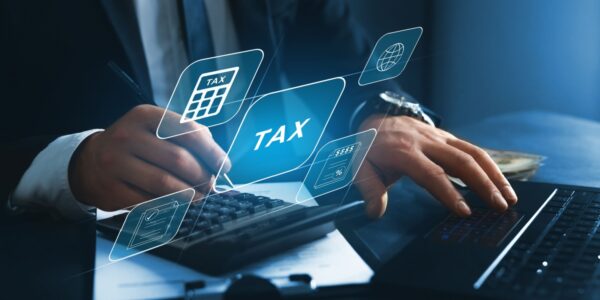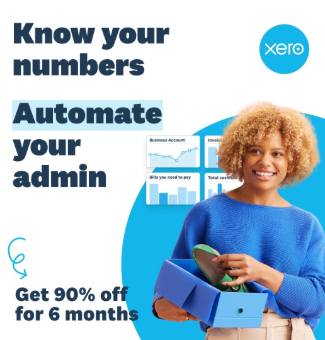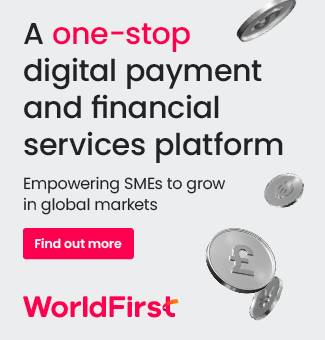Making Tax Digital for Income Tax is a new HMRC service set to modernise how sole traders and landlords record and report their taxable income.
From 6 April 2026, individuals with qualifying income from self-employment and property will be legally required to maintain digital business records and report their earnings and expenses every quarter using compatible commercial software.
Following the success of Making Tax Digital for VAT, this new service for sole traders and landlords aims to reduce tax errors, increase compliance, and streamline the way individuals handle their tax obligations throughout the year.
Here’s an overview of what Making Tax Digital for Income Tax entails and who needs to sign up.
Key takeaways
- Making Tax Digital for Income Tax is a new service for individuals to digitally record and report their self-employed and property income to HMRC.
- The service will launch on 6 April 2026. Sole traders and landlords must sign up from this date if their qualifying annual income for the 2024/25 tax year was over £50,000. This threshold will be reduced to £30,000 from April 2027, then to £20,000 from April 2028.
- Eligible individuals can opt in early to Making Tax Digital for Income Tax, allowing them to test the system and get used to the changes ahead of time.
What Is Making Tax Digital (MTD) for Income Tax?
Making Tax Digital (MTD) for Income Tax is part of HMRC’s wider initiative to digitise the UK tax system. It applies specifically to individuals earning qualifying income as sole traders and landlords.
MTD for Income Tax will require qualifying individuals (or their tax agent) to use MTD-compatible software to:
- Keep up-to-date digital business records
- Submit quarterly updates (summaries of their qualifying income and expenses) to HMRC
- File a tax return after the end of the tax year
Making Tax Digital (MTD) for Income Tax is part of HMRC’s wider initiative to digitise the UK tax system.
It applies specifically to individuals earning qualifying income as sole traders and landlords.
By introducing digital record-keeping and more frequent reporting throughout the tax year, the new regime will help increase efficiency, bring the UK tax system closer to real-time reporting, and reduce the potential for mistakes and missed deadlines.
Who needs to sign up
Only sole traders and landlords are currently impacted by Making Tax Digital for Income Tax. You’ll need to sign up to use the service if all the following apply:
- You’re an individual registered for Self Assessment
- You earn income from self-employment or property (or both)
- Your annual qualifying income exceeds the specified threshold for that year
Your qualifying income is the total gross income you earn in a tax year from self-employment and property.
Making Tax Digital for Income Tax does not apply to partnerships, company directors, or shareholders. However, individuals in a partnership will be required to use the service in the future. HMRC will set out the timeline for this at a later date.
When to sign up
While Making Tax Digital for Income Tax goes live on 6 April 2026, the timetable for signing up to the service will be rolled out in phases based on different annual income thresholds.
Qualifying individuals must start using the service from:
- 6 April 2026 – if their gross annual income from self-employment and property totals over £50,000 in the 2024/25 tax year
- 6 April 2027 – if their gross annual income from these sources is over £30,000 in the 2025/26 tax year
- 6 April 2028 – if their gross annual income from these sources is more than £20,000 in the 2026/27 tax year
HMRC will review the qualifying income on an individual’s most recent Self Assessment tax return to determine whether they are required to start using Making Tax Digital for Income Tax.
- 2025-26 tax year – what UK business owners can expect
- Landlord tax guide – including buying, selling, and letting property
- Self Assessment – 16 common questions answered
You don’t need to sign up if your income is below the qualifying threshold – you can continue reporting your income through Self Assessment. However, you may wish to consider signing up voluntarily.
Signing up voluntarily
While Making Tax Digital for Income Tax is still in its testing phase, some individuals can sign up voluntarily for the 2025/26 tax year and start using the service before it goes live.
This is a great way to build your understanding of the new requirements and test the service. You’ll also enjoy exclusive access to HMRC’s MTD Customer Support Team.
When the service launches on 6 April 2026, eligible sole traders and landlords with gross annual income below the threshold can also sign up voluntarily and benefit from the changes.
Exemptions and exclusions
Under certain circumstances, individuals may request an exemption from Making Tax Digital for Income Tax. You can apply for exemption if using digital tools is not feasible due to:
- Your age, a disability, or a health condition
- Your location – e.g. if you do not have reasonable access to internet services
- Religious beliefs that prohibit the use of digital technology
Some individuals will be automatically excluded and cannot register for the service. These include:
- Trustees (including charitable and pension trustees)
- Personal representatives of deceased persons
- Lloyd’s members handling underwriting-related activities
- Non-resident companies
- Individuals who do not have a National Insurance number
If exempt, you will continue to report your income and expenses through Self Assessment.
Signing up for Making Tax Digital for Income Tax
Whether Making Tax Digital for Income Tax is compulsory or you decide to sign up voluntarily, follow the steps below to start using the service and reporting your income to HMRC.
1. Choose compatible software
The first step is to choose commercial software that is compatible with MTD for Income Tax. You’ll use this software to fulfil your digital record-keeping and reporting tasks for HMRC.
Determine whether the software supports your existing record-keeping systems, such as spreadsheets. If you work with an accountant or agent, speak with them before choosing your software – they can often manage MTD compliance on your behalf.
2. Sign up online
Once you’ve chosen suitable software, you can sign up for MTD for Income Tax online using your Government Gateway credentials. You’ll need to provide certain details to HMRC, including:
- Your accounting period
- National Insurance number
- Date you started trading or renting out property (if it’s within the past two years)
- Accounting method (e.g. cash basis or traditional)
- Tax year you would like to start using the service
Sole traders must also provide their business name, address, and type of trade.
Where applicable, you’ll need to sign up separately for each income source (i.e. if you have more than one type of self-employed and/or property business).
3. Authorise your software
The next step is authorising your software to connect to the MTD for Income Tax service. Simply enter your Government Gateway user ID and follow your software’s instructions. You’ll need to renew the connection every 18 months.
4. Keep digital records
Once enrolled in Making Tax Digital for Income Tax, you’re legally required to create and store up-to-date digital records of your self-employment and property income and expenses using your software.
5. Submit quarterly updates
Quarterly updates are unadjusted summaries of your income and expenses from self-employment and property. These updates are not tax returns – they simply provide a snapshot of your business activities throughout the tax year.
Your MTD-compatible software will use the information in your digital records to create quarterly updates for each income and expense category once every three months (i.e. every quarter).
You must send these quarterly updates to HMRC through your software. Your software will tell you when and how to send them.
If you have more than one source of self-employment or property income, you’ll need to send quarterly updates for each business.
After each submission, you’ll be able to see an estimated tax bill in your software or HMRC online account. This will make it easier to keep track of what you might owe for the tax year.
Understanding your update periods and submission deadlines
You can choose between two types of quarterly update periods: standard or calendar year.
Standard update periods align with the tax year (6 April in one year to 5 April the following year). The table below shows the update periods and submission deadlines that apply.
| Update period | Submission deadline |
| 6 April to 5 July | 7 August |
| 6 April to 5 October | 7 November |
| 6 April to 5 January | 7 February |
| 6 April to 5 April | 7 May |
Calendar update periods align with the calendar year (1 January to 31 December) and end on the last day of the month. The table below shows the update periods and submission deadlines that apply.
| Update period | Submission deadline |
| 1 April to 30 June | 7 August |
| 1 July to 30 September | 7 November |
| 1 October to 31 December | 7 February |
| 1 January to 31 March | 7 May |
Late submissions may incur penalties once MTD becomes mandatory in April 2026, but these will not apply during the testing phase.
6. Adjust your digital records throughout the year
It’s essential to maintain accurate and up-to-date records throughout the tax year. Where necessary, you can correct or adjust entries in your software at any time, such as:
- Removing disallowable expenses
- Accounting for accruals or prepayments
- Claiming tax reliefs and allowances (e.g. trading allowance, capital allowances)
Once you’ve submitted your fourth quarterly update for the year, you should review your figures and make adjustments as necessary before finalising your Income Tax position and sending your tax return.
7. Finalise your Income Tax position
Following the end of the year, you’ll need to finalise your Income Tax position before submitting your annual tax return. This involves sending HMRC information on any other income sources you have, such as:
- Income from employment
- Pension income
- Savings
- Dividends from shares
Once you’ve told HMRC about all sources of taxable income for the year, you must send your final tax return using your software.
The deadline for finalising your Income Tax position and filing your tax return is 31 January after the end of the tax year.
HMRC will then generate your Self Assessment tax bill for that year. The payment deadlines are the same as those for Self Assessment, so you must settle your tax bill by 31 January to avoid penalties.
Thanks for reading
Please feel free to comment below if you have any questions about this post. However, if you need help with Making Tax Digital for Income Tax, you should seek expert advice from an accountant.
HMRC provides detailed guidance on using Making Tax Digital for Income Tax, including videos and webinars for individuals, landlords, and agents.
Explore the Quality Company Formations Blog for more business advice and limited company guidance.
















Join The Discussion
Comments (2)
Excellent article! Digitizing taxation seems extremely useful for my own Personal tax advisory UK business.
Dear David,
Thank you for your kind response!
We are so pleased you found our recent article useful for your own business.
Kind regards,
The Quality Formations Team.